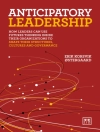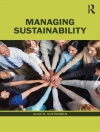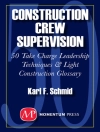A comprehensive approach focused on sustainable change
Asset Building and Community Development, Fourth Edition examines the promise and limits of community development by showing students and practitioners how asset-based developments can improve the sustainability and quality of life. Authors Gary Paul Green and Anna Haines provide an engaging, thought-provoking, and comprehensive approach to asset building by focusing on the role of different forms of community capital in the development process. Updated throughout, this text explores how communities are building on their key assets—physical, human, social, financial, environmental, political, and cultural capital— to generate positive change. With a focus on community outcomes, the authors illustrate how development controlled by community-based organizations provides a better match between assets and the needs of the community.
Jadual kandungan
Chapter 1: The Role of Assets in Community-Based Development
Whither Community?
Growth Versus Development
People Versus Place
Capacity Building
Community Sustainability
The Challenge of Regionalism
Asset Building
Public Participation
The Role of Community-Based Organizations
Models of Community Development
Summary and Conclusions
Chapter 2: A History of Community Development in America
The Evolution of Community Development
Recurring Issues in Community Development
Summary and Conclusions
Chapter 3: Community Sustainability
What Is Community Sustainability?
Why Sustainability?
The History of Sustainability
Approaches to Sustainability
Summary and Conclusions
Chapter 4: The Community Development Process
Community Organizing
Public Participation
Planning Models, Techniques, and Process Steps
Summary and Conclusions
Chapter 5: The Role of Community-Based Organizations
Community Development Corporations
Local Development Corporations
Neighborhood Associations
Community Youth Organizations
Faith-Based Organizations
Community Foundations
International Nongovernmental Organizations
Summary and Conclusions
Chapter 6: Human Capital
Workforce Development Issues
Key Concepts and Debates
CBOs and Workforce Development
Context for Workforce Development
Key Actors and Institutions
Local Labor Market Data
Developing Goals and Strategies
Summary and Conclusions
Chapter 7: Social Capital
Social Capital Definition and Issues
Key Concepts and Debates
CBOs and Social Capital
Social Capital and Ethnic Enclaves
Social Capital and Local Economic Development
Assessing Social Capital
Summary and Conclusions
Chapter 8: Physical Capital
Housing Issues
Key Concepts and Debates
A History of Federal Housing Policy
The Role of CBOs in Housing Provision
The Impact of CBOs
Summary and Conclusions
Chapter 9: Financial Capital
Financial Capital Issues
Key Concepts and Debates
Community Credit Institutions
Context for Community Credit Institutions
Key Actors and Institutions
Community Economic Development Finance
Predatory Lending
Individual Development Accounts
Assessing Local Credit Markets
Strategies for Building Local Credit Markets
Summary and Conclusions
Chapter 10: Environmental Capital
Forms of Environmental Capital
Land Use and Environmental Capital
The Roles of Government and the Market
Community-Based Organizations
Summary and Conclusions
Chapter 11: Political Capital
Key Concepts and Debates
Methods
Community-Based Organization and Political Capital
Community Collaboration and Political Capital
Deliberative Democracy as Political Capital
Summary and Conclusions
Chapter 12: Cultural Capital
Cultural Capital Definition and Issues
Key Concepts and Debates
Culture and Place
Government and CBOs in Cultural Capital
Summary and Conclusions
Chapter 13: Food, Energy, and Community
Local Food Systems and Community
Types of Local Food Systems
Energy and Local Sustainability
Summary and Conclusions
Chapter 14: Natural Disasters and Climate Change: The Role of Community Assets
What Are Natural Disasters?
What Creates Natural Disasters?
Responses to Natural Disasters
The Role of Community-Based Organizations
Summary and Conclusions
Chapter 15: The Future of Community Development
Fulfilling the Promise of Community-Based Development
Local Versus External Initiation of Community Development
Community-Based Organizations and International Development
An Agenda for Promoting Community Development in America
Summary and Conclusions
Mengenai Pengarang
Anna L. Haines, Ph.D. is a professor in the College of Natural Resources at the University of Wisconsin – Stevens Point and a land use and community development specialist with the University of Wisconsin-Extension. Haines received her Ph.D. from the University of Wisconsin – Madison in the Department of Urban and Regional Planning. Her research and teaching focuses on planning and community development from a natural resources or environmental perspective. Her research has focused on evaluating community planning and zoning in terms of smart growth and sustainability, land parcelization, and local food systems. Her extension work has focused on comprehensive planning and planning implementation tools and techniques, sustainable communities, and property rights issues.












